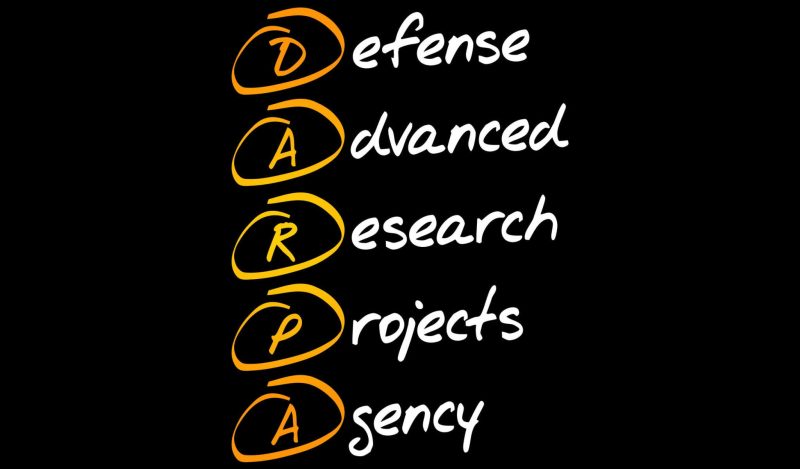Recently, revelations by outstanding artist and writer/researcher/investigator Sasha Latypova about Covid genetic vaccines have shed light on the shady, and as she calls it criminal, process by which the vaccine products were manufactured and authorized.
Medical countermeasures with no regulatory oversight
Latypova combed through FOIA-extracted and leaked documents to find convincing evidence that Covid vaccine manufacture and distribution were conducted by the US Department of Defense (DoD) under laws covering “medical countermeasures,” rather than regulations intended to ensure the safety of pharmaceutical products. Consequently, the Covid vaccines could bypass regulatory scrutiny and were not required to comply with good manufacturing practices.
It is highly worth watching Latypova’s 30-minute presentation at a conference in Stockholm in January 2023.
I find Latypova’s analysis convincing, and I am grateful for her work in exposing the charade of nonexistent quality and safety controls for Covid vaccine products. However, I disagree with her conclusion that the injuries and deaths resulting from the lack of regulatory oversight are intentional murder by a cabal of omnipotent “globalist central bankers” whose aim is to depopulate the planet.
Vaccines’ “success” was crucial for the pharma-government-NGO biodefense network
Latypova tries to bolster the murderous banker scenario by positing that the same enormous Covid vaccine profits could have been achieved even without killing anyone:
I keep pointing out that if the motive were JUST PROFIT, then the most profitable strategy would have been to ship placebo. … Yet, the governments (plural)-pharma cartel insists on killing and injuring millions of people, obviously limiting the profit potential by doing so.
This, I believe, is based on a fundamental misunderstanding of the role that medical countermeasures, including vaccines, play in the overall biodefense scheme.
Rather than “bioweapons” intended to kill millions of people, Covid vaccines were rushed through the development process as the culmination of a sisyphean decades-long biodefense attempt to develop countermeasures against pathogens with bioweapon potential.
In view of the enormous time, expense and effort devoted to medical countermeasure development (details below), it becomes clear that Covid was, in fact, the perfect opportunity to finally demonstrate that all that effort had been worthwhile. How? By bringing a “successful” vaccine product (one that could be shown to have any benefit at all, even just a transient, short-term protection from severe infection) to market at record speed – in time to “save millions of lives.”
And not just any product, but an entire platform that can be used against every emerged, emerging and yet-to-emerge pathogen. That is what the “success” of the Moderna and BioNTech/Pfizer mRNA vaccines represents.
If the Covid vaccine development using these platforms entailed rushing through the design and manufacturing process, bypassing regulations, and causing some serious adverse events and deaths, so be it. The goal of developing a real-life biodefense countermeasure that could be injected into billions of arms, in a process that could theoretically be replicated for any pathogen, was worth it.
Understanding vaccines in the context of biodefense planning
Ever since 9/11 and the anthrax attacks of 2001, the development of medical countermeasures against potential biological weapons has been a major part of the US government’s overall counterterrorism efforts.
As explained in a 2021 Lancet paper, “Biodefense Research Two Decades Later: Worth the Investment?”:
Factors such as sustained government and private funding resources driven by the looming threat of bioterrorism and the recent occurrence of natural outbreaks of bioterror-related pathogens including Coxiella burnetii, Ebola virus (EBOV), SARS-CoV-1, SARS-CoV-2, influenza, and Lassa virus are likely major contributors to the ever-expanding global biodefense market.
When we understand the Covid response in this biodefense framework, SARS-CoV-2 is a “bioterror-related pathogen” and the antiviral medicines and vaccines developed to control it are medical countermeasures. These definitions are important, because they unlock “Warp Speed” development tracks that are not available when you try to develop a vaccine or medicine against just any old pathogen.
Medical countermeasures are worth billions (and many more billions!)
Starting in 2001, the budget for researching and developing medical countermeasures ballooned exponentially, as described in the Lancet:
Total US biodefense funding dramatically increased from ~$700,000,000 in 2001 to ~$4,000,000,000 spent in 2002; the peak of funding in 2005 was worth nearly $8,000,000,000 and continued with steady average spending around $5,000,000,00016,24.
That’s over $100 billion devoted to biodefense over the last two decades.
And what were those billions devoted to? In a 2003 abstract entitled “Expanded Biodefense Role for the National Institutes of Health” Dr. Anthony Fauci articulates his biodefense vision:
…the goal within the next 20 years is to have ‘bug to drug’ within 24 hours. This would meet the challenge of genetically engineered bioagents.
In other words, Fauci envisions the enormous increase in biodefense spending going toward the research and development of platforms that – by 2023 – will be able to magically generate medical countermeasures for any bioweapon in a single day.
Fifteen years later, with no such fantastical platform in sight, DARPA (Defense Advanced Research Projects Agency) published an updated medical countermeasure plan in 2017 entitled “Removing the Viral Threat: Two Months to Stop Pandemic X from Taking Hold.” Instead of Fauci’s 24 hours from bug to drug, this plan tells us “DARPA aims to develop an integrated end-to-end platform that uses nucleic acid sequences to halt the spread of viral infections in sixty days or less.”
Before Covid, this 60-day plan in no way encompassed a global vaccine rollout involving billions of doses. It was limited to developing countermeasures that could protect US troops in cases of bioweapons attacks – even if just temporarily. As reported in March 2020 by the IEEE, a nonprofit professional organization for engineering and technology:
When DARPA launched its Pandemic Preparedness Platform (P3) program two years ago, the pandemic was theoretical. It seemed like a prudent idea to develop a quick response to emerging infectious diseases. Researchers working under the program sought ways to confer instant (but short-term) protection from a dangerous virus or bacteria.
On March 11, 2020, when COVID-19 was declared a global pandemic, the DARPA program had yet to produce any safe or effective countermeasures against anything – not even short-term. As a July 2020 Washington Post article noted:
Established years before the current pandemic, the program was halfway done when the first case of the novel coronavirus arrived in the United States early this year. But everyone involved in the effort by the Defense Advanced Research Projects Agency (DARPA) knew their time had come ahead of schedule.
Thus, when Covid came along, the platforms that use nucleic acid sequences (DNA and mRNA), having never produced a single usable product, were thrust into Warp Speed to produce, among others, Moderna and BioNTech/Pfizer’s Covid vaccines.
Medical countermeasures bypass regulatory barriers
The problem with developing vaccines, if you expect them to be truly safe and effective, is that it takes a long, long time. The research process, including three phases that evaluate multiple parameters of safety and efficacy, requires years of careful experimentation and analysis.
Then, by the time you have a safe and effective vaccine, the threat of the virus is probably over. Which means no pharmaceutical company wants to invest in such a risky proposition. For anyone who believes they have a promising vaccine candidate or platform, these hurdles can seem unnecessarily cumbersome and counterproductive.
One solution, ingeniously utilized by the Covid vaccine developers, is to define the vaccine as a medical countermeasure in a war against a “bioterror-related pathogen” after declaring a Public Health Emergency that opens the way for Emergency Use Authorization.
In that very specific scenario, as Latypova has shown, the countermeasures are classified as “prototypes” and their manufacturing process becomes merely a “demonstration,” requiring basically no regulatory oversight.
The medical countermeasure pot of gold at the end of the pandemic rainbow
All the time, money and research sunk into attempts to develop bioweapon countermeasures caused everyone involved to view Covid as a golden opportunity. In fact, governments, pharmaceutical companies and NGOs invested in biodefense research were determined that the Covid genetic vaccines would “succeed” no matter what. They were not trying to murder anyone, but they also did not plan to stop or slow down, regardless of incidental injuries or death.
By defining the virus as a potential bioweapon and the vaccine products as countermeasures they were able to:
- Avoid long years of experimentation to prove safety and efficacy
- Give drug companies ample incentives to pivot to mass vaccine manufacturing: billions in guaranteed sales and indemnity from any liability for potential harms caused by their products
- Build a foundation for untold future riches, based on the genetic platforms whose “success” meant they could be used to create vaccine products against pretty much anything.
The dozens of new genetic vaccine products for everything from the flu to various cancers to AIDS currently under development by Moderna and BioNTech attest to the importance of the foundational Covid vaccine “success.”
Join the conversation:


Published under a Creative Commons Attribution 4.0 International License
For reprints, please set the canonical link back to the original Brownstone Institute Article and Author.









